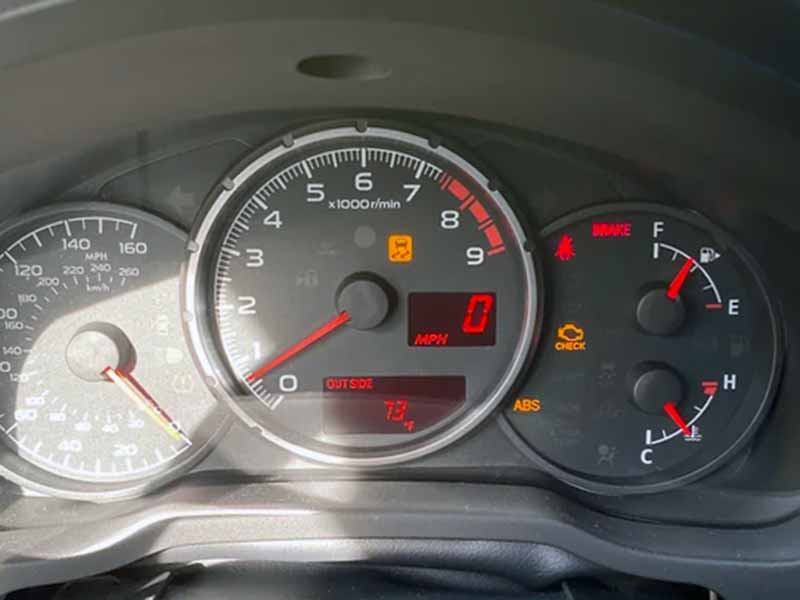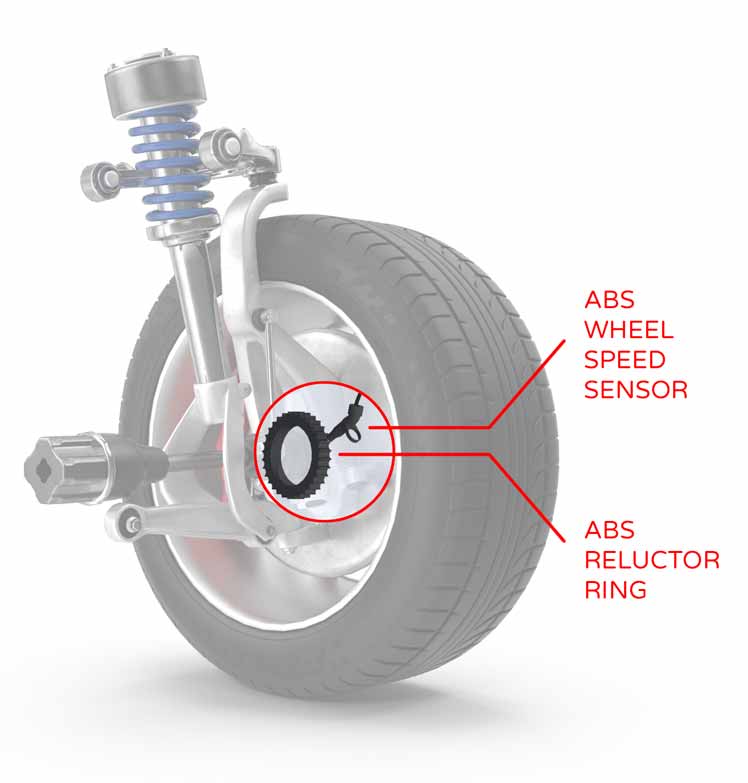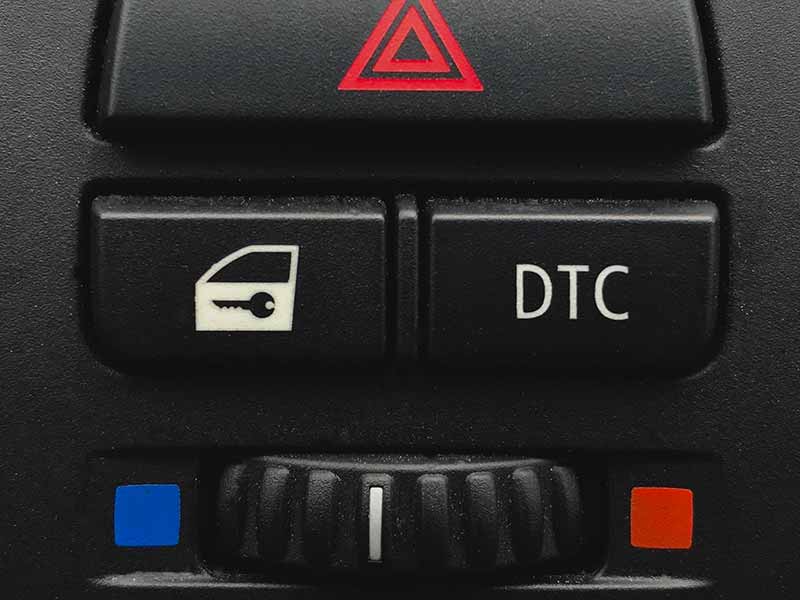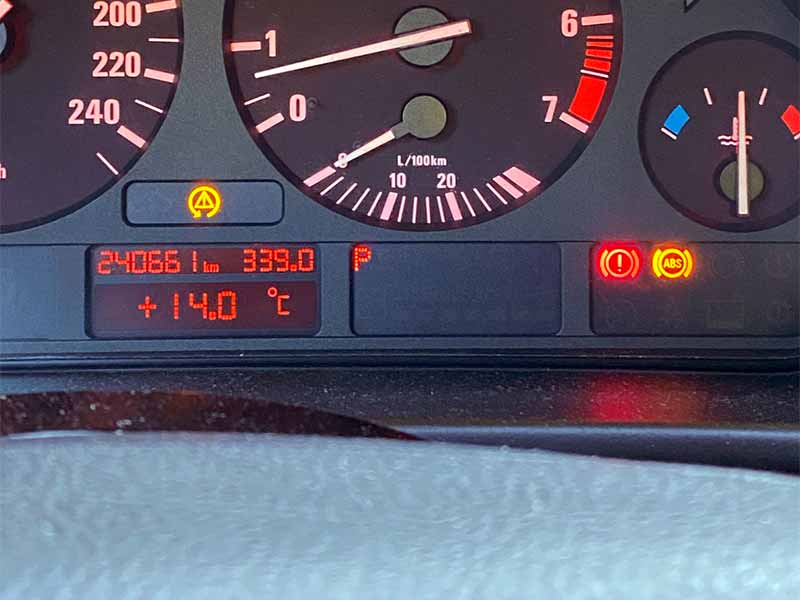Ever been driving and suddenly those ominous ABS and traction control lights flicker on your dashboard? It’s enough to make your heart skip a beat, especially if you’re not sure what they mean or how serious the issue is. But don’t panic—understanding what these lights signify and how to address them can be your first step toward safer driving.
ABS And Traction Control Light On
The ABS and traction control lights illuminate on your dashboard to indicate that there may be a malfunction with your vehicle’s Anti-lock Braking System or traction control system.
These warning lights could signify issues ranging from faulty sensors to low brake fluid, and addressing them promptly is crucial for safe driving.
In this article, we’ll delve into the intricacies of ABS and traction control systems, explore common reasons why these warning lights may come on, and offer practical advice on whether it’s safe to continue driving.
We’ll also discuss how weather conditions like rain can affect these systems and provide a guide on how to turn off these warning lights yourself, along with the potential costs involved in professional repairs.
Let’s take a closer look.

Understanding ABS and Traction Control Systems
ABS stands for Anti-lock Braking System. This system is crucial for helping you maintain control of your vehicle, especially during emergency braking. When you slam on the brakes, ABS prevents the wheels from locking up. A locked-up wheel can skid, making it hard to steer and increasing the risk of an accident.
How ABS Works
- Sensors: ABS uses wheel speed sensors to monitor how fast each wheel is spinning.
- Control Module: The information from the sensors is sent to a control module, which is like the brain of the system.
- Valves: Based on the data, the control module adjusts the brake fluid pressure by opening and closing valves. This ensures that the wheels don’t lock up.
What is Traction Control?
Traction control is another safety feature that works hand-in-hand with ABS. While ABS focuses on braking, traction control helps you accelerate and make turns safely. It prevents your wheels from spinning out of control when you’re speeding up or going around a bend.
How Traction Control Works
- Monitoring: Just like ABS, the traction control system uses wheel speed sensors to keep an eye on how fast the wheels are turning.
- Comparing Speeds: The system compares the speed of all the wheels. If one wheel is spinning faster than the others, that could mean it’s losing grip.
- Adjusting Power: If a wheel is spinning too fast, the system will reduce engine power or apply the brakes to that wheel, helping it regain traction.
The Connection Between ABS and Traction Control
You might be wondering why we’re talking about ABS and traction control together. Well, these two systems are often connected and share some of the same parts.
Shared Components
- Wheel Speed Sensors: Both systems use the same wheel speed sensors to monitor how fast the wheels are spinning.
- Control Module: Often, a single control module manages both the ABS and the traction control system.
Working Together for Safety
When you’re driving, both systems are active, keeping an eye on your wheel speed. If you try to accelerate too fast on a slippery road, the traction control kicks in. If you slam on the brakes, ABS takes over. They work together to help you maintain control of your vehicle in different situations.
Why These Systems Matter for Your Tires
I can’t stress enough how these systems impact the performance and safety of your tires. Good traction and effective braking are largely dependent on the quality of your tires. Worn-out or underinflated tires can reduce the effectiveness of both ABS and traction control systems. Therefore, regular tire maintenance is crucial for these systems to function optimally.

Common Reasons for ABS and Traction Control Lights to Come On
One of the most common reasons for the ABS and traction control lights to illuminate is a problem with the wheel speed sensors. These sensors are crucial for both systems to function correctly.
How Sensor Issues Affect Systems
- False Readings: A faulty sensor can send incorrect speed data to the control module.
- System Confusion: Wrong data can confuse the control module, making it hard for the system to decide whether to engage ABS or traction control.
Steering Angle Sensor Problems
The steering angle sensor keeps track of the angle of the steering wheel, which helps the control module understand your intended direction.
Why It’s Important
- Directional Control: Knowing the steering angle helps the system apply the right amount of brake force or engine power to individual wheels.
- Safety: A defective steering angle sensor can compromise the effectiveness of ABS and traction control, making turns and braking less safe.
Brake Fluid Level and Quality
Low or contaminated brake fluid can also trigger the ABS and traction control lights.
The Role of Brake Fluid
- Pressure: Brake fluid helps maintain the hydraulic pressure needed for the braking system.
- Quality Matters: Contaminated fluid can cause blockages, affecting the system’s performance.
After Tire Change or Brake Job
Sometimes, the warning lights may come on after you’ve had a tire change or brake job.
Potential Causes
- Sensor Disconnection: Sometimes, the wheel speed sensors may be accidentally disconnected during these procedures.
- Calibration: New tires or brakes might require the system to recalibrate, which could temporarily trigger the warning lights.
How Tires Are Involved
It’s important to note that the condition of your tires can directly affect these warning lights. For example:
- Uneven Wear: Tires that are worn unevenly can cause the wheel speed sensors to send mixed signals to the control module.
- Tire Pressure: Incorrect tire pressure can also affect the wheel speed, potentially triggering the ABS and traction control lights.

Is It Safe to Drive?
When the ABS and traction control lights are on, it’s a sign that these safety systems may not be working properly. While your basic braking system should still function, you won’t have the added safety features designed to prevent skidding and loss of control.
What You Lose
- Anti-lock Braking: Without ABS, your wheels could lock up during hard braking, making it difficult to steer.
- Traction Control: Without this feature, your wheels could spin out of control when accelerating or turning, especially on slippery surfaces.
When to Pull Over
It’s crucial to understand when it’s absolutely necessary to stop driving and seek immediate help.
Warning Signs
- Multiple Lights: If other warning lights, such as the check engine light, are also on, it’s a strong indicator that you should pull over.
- Noticeable Performance Issues: If you feel a change in the way your vehicle handles, especially during braking or turning, it’s safer to stop.
How Tires Factor In
I can tell you that the condition of your tires can make a significant difference in how risky it is to continue driving with these warning lights on.
Tire Considerations
- Tire Tread: Good tire tread can provide some level of grip even without the aid of ABS and traction control.
- Tire Pressure: Properly inflated tires are crucial for optimal braking and traction. Low or high tire pressure can exacerbate the risks when these systems are down.
Temporary Measures
If you absolutely must continue driving for a short distance, here are some precautions you can take:
- Slow Down: Lower your speed to reduce the need for hard braking or quick turns.
- Increase Following Distance: Give yourself more room to stop in case of an emergency.
- Avoid Sudden Moves: Try to avoid sudden lane changes or turns that could cause skidding.

Weather-Related Causes
Rain can significantly affect the performance of your vehicle’s ABS and traction control systems. Wet roads are slippery, and this can cause your wheels to lose grip, making these systems work overtime to keep you safe.
How Rain Affects Systems
- Reduced Friction: Rainwater creates a layer between the road and your tires, reducing grip.
- Increased Workload: Both ABS and traction control have to work harder to maintain wheel stability on wet roads.
Common Weather-Related Issues
When it rains, you might notice that the ABS and traction control lights come on more frequently. Here’s why:
Water Intrusion
- Sensor Issues: Water can seep into the wheel speed sensors, causing them to malfunction.
- Electrical Problems: Moisture can also affect the electrical components of the control module.
Hydroplaning Risk
- Loss of Control: Hydroplaning occurs when your tires lose contact with the road, making ABS and traction control ineffective.
- Warning Lights: In such cases, the systems may recognize the loss of control, triggering the warning lights.
What to Do When Lights Come On in Bad Weather
If the ABS and traction control lights come on during a rainstorm, here are some steps you can take:
- Slow Down: Reducing speed is the first and most crucial step.
- Avoid Puddles: Try to avoid standing water on the road, as this increases the risk of hydroplaning.
- Check Tires: Once it’s safe, pull over and check your tires for proper inflation and tread depth.

How to Turn Off ABS and Traction Control Lights
Sometimes, you can resolve the issue that’s causing the ABS and traction control lights to come on without needing professional help. However, these are temporary fixes and should not replace a thorough inspection.
Resetting the System
- Turn Off and Restart: One of the simplest methods is to turn off your vehicle, wait for a few minutes, and then restart it. This can sometimes reset the control module.
- Check Brake Fluid: Ensure that the brake fluid is at the proper level and is not contaminated.
Sensor Cleaning
- Visual Inspection: Check the wheel speed sensors for any visible damage or dirt.
- Cleaning: Use a cloth to gently clean the sensor. Sometimes, dirt or small debris can interfere with the sensor’s function.
When to Consult a Professional
If the warning lights persist or come back after a short period, it’s time to consult a professional. DIY methods are not a substitute for a proper diagnosis and repair.
Signs You Need Professional Help
- Persistent Lights: If the lights don’t go off after trying DIY methods.
- Performance Issues: If you notice any changes in how your vehicle handles, especially in braking or turning.
How Tires Are Related
It’s important to emphasize that your tires play a significant role in these systems. A problem with your tires can trigger these warning lights.
Tire-Related Causes
- Uneven Wear: If your tires are worn unevenly, this could cause the wheel speed sensors to send incorrect data to the control module.
- Tire Pressure: Incorrect tire pressure can also affect the wheel speed, which in turn can affect both ABS and traction control systems.
Cost Considerations
While turning off the lights yourself can be a temporary relief, fixing the underlying issue is crucial for your safety. The cost of professional repair can vary widely based on the issue but consider it an investment in your safety.
Typical Costs
- Sensor Replacement: Replacing a wheel speed sensor can cost between $50 to $300.
- Control Module: A new control module can be quite expensive, ranging from $200 to $900.

Cost of Fixing ABS and Traction Control Systems
Fixing ABS and traction control systems isn’t always a straightforward affair. The cost can vary significantly depending on the issue at hand. It’s essential to understand what you might be up against financially when these warning lights come on.
Factors Affecting Cost
- Type of Issue: Sensor replacements are generally cheaper than control module repairs.
- Labor Costs: The complexity of the repair also affects how much you’ll pay in labor.
- Vehicle Model: Some cars have more complex systems, which can be more expensive to fix.
Common Repairs and Their Costs
Here’s a breakdown of some common issues and their associated costs.
Wheel Speed Sensors
- Part Cost: The sensors themselves can range from $20 to $100 each.
- Labor: Expect to pay an additional $50 to $100 for labor.
Control Module
- Part Cost: A new control module can range from $200 to $900.
- Labor: Labor costs can add another $100 to $200 to the bill.
Steering Angle Sensor
- Part Cost: These sensors can cost between $25 to $150.
- Labor: Labor for this repair can range from $50 to $100.
How Tires Factor In
It’s crucial to note that maintaining your tires can sometimes prevent these issues in the first place.
Preventive Measures
- Regular Rotation: This ensures even wear, which helps the wheel speed sensors function correctly.
- Proper Inflation: Keeping your tires at the right pressure can improve both ABS and traction control performance.
Resources
Below are some links you may find helpful when learning about tires
Final Thoughts
Understanding your vehicle’s ABS and traction control systems is more than just a technical exercise—it’s a crucial aspect of safe driving. From wheel speed sensors to brake fluid levels, various factors can trigger these warning lights. While some issues can be temporarily resolved with DIY methods, professional diagnosis and repair are often necessary for long-term safety.
Good luck and happy motoring.




